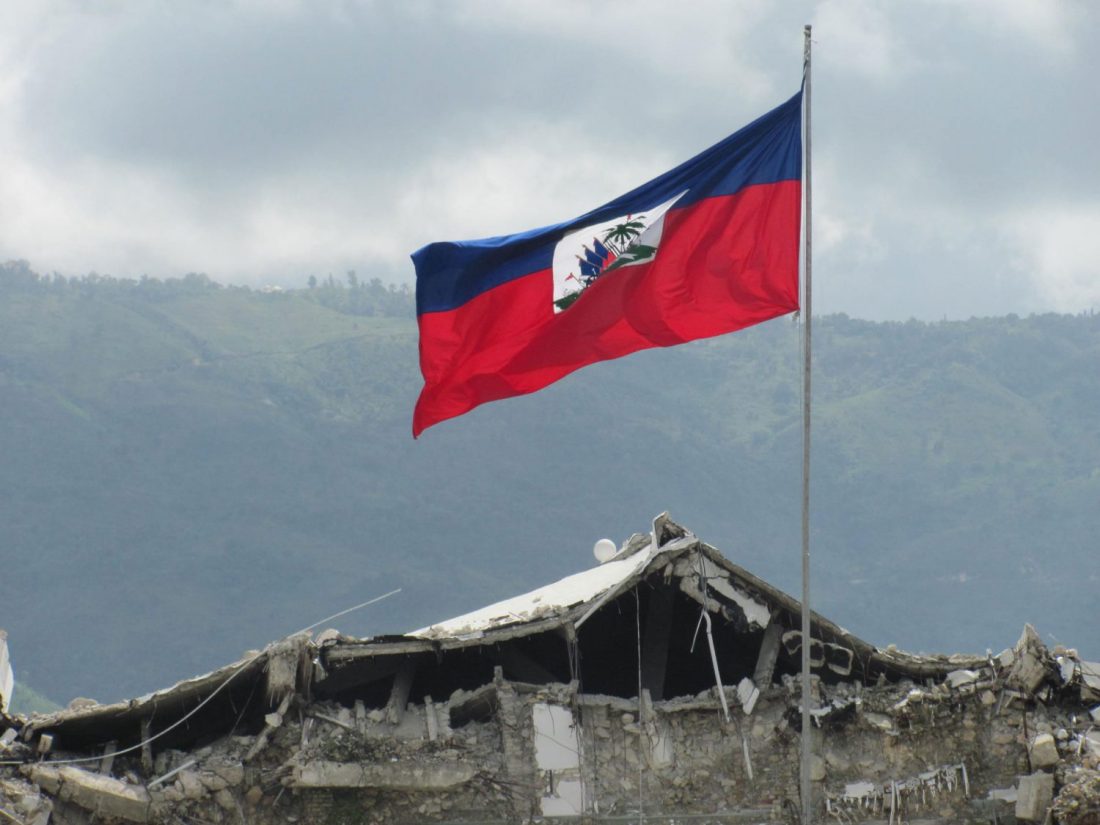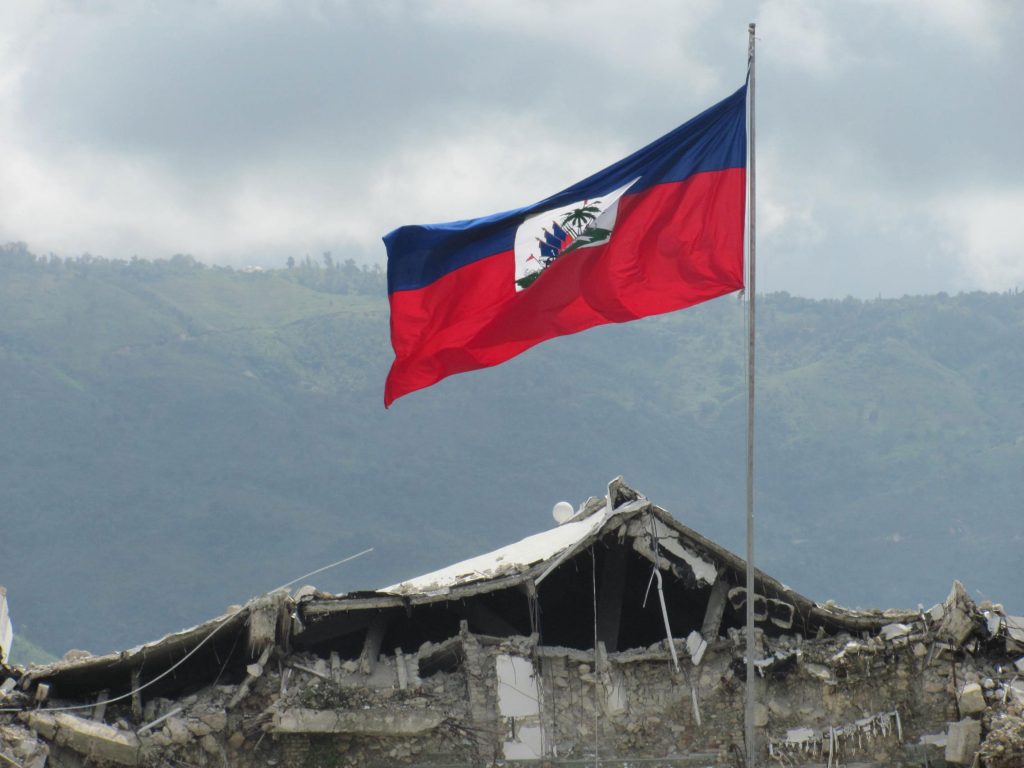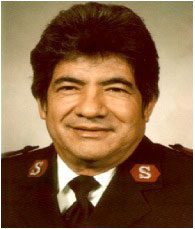Listen to this article
Listen to this article
Loading
Play
Pause
Options
0:00
-:--
1x
Playback Speed- 0.5
- 0.6
- 0.7
- 0.8
- 0.9
- 1
- 1.1
- 1.2
- 1.3
- 1.5
- 2
Audio Language
- English
- French
- German
- Italian
- Spanish
Open text
haiti one year later: ‘build back better’. the salvation army remains committed to haiti’s recovery. by heidi j. bailey, lt. colonel. the haitian flag flies in port-au-prince over rubble from the january 2010 earthquake (photo by yves montoban). before the shocking destruction of the 7.0-magnitude earthquake that struck on jan. 12, 2010, haiti was already struggling with 70 percent unemployment, a 15 percent infant mortality rate, a fragile government plagued by corruption, and few public services for its citizens. after the earthquake, haiti was confronted with a homeless population of 1.5 million, a death toll of 250,000, unimaginable suffering for 300,000 injured and minimal resources with which to respond. in the weeks to come, 200,000 people would require amputation, creating a new generation of disabled persons in a culture where even the most healthy struggle to survive. in just 37 seconds, haiti was changed forever. immediate response. the salvation army immediately responded—something they have been doing in haiti since 1950 when the army commenced its ministry there. today, haiti is home to the largest salvation army in the western hemisphere with more than 60 churches, 11,000 students in 48 salvation army schools, clinics and children’s homes as well as many community development programs. the salvation army’s international emergency earthquake response in haiti has included medical care to over 26,000 victims, the distribution of 7 million meals, 1.5 million gallons of purified water, as well as thousands of tents, cots, tarps, hygiene kits, cleaning kits and cooking oil. lt. col. heidi bailey, international haiti earthquake response director, visiting with haitian children in jacmel where 606 temporary shelters were built (photo by brad bailey). electricity was provided to 20,000 people who sought immediate shelter on a sports field next door to the army’s port-au-prince compound. this “tent city” soon came under salvation army management, and for 10 months, the army partnered with other non-governmental organizations to help provide relief and security for the internally displaced people (idp). today, it is still home to 13,000 people who remain homeless, but not abandoned. in addition, the salvation army built over 600 temporary shelters in jacmel, 25 miles from the capital, helping give families a much-needed start in life. long-term recovery. in the ensuing months, continued unmet needs and indescribable human suffering led the army from its emergency response to a recovery and development phase. this new recovery phase is directed by the international haiti earthquake response office in london, supported by the leadership of the caribbean territory and carried out through the direction of the haiti divisional leadership and the more recently established haiti recovery and development office, which is staffed by eight salvation army officers in port-au-prince. the recovery initiatives are intended to build up haiti through community development based projects, which include continued support to the idp camp in port-au-prince, emotional support for children and adolescents in port-au-prince and four other earthquake affected communities, financial support to children who were displaced by the earthquake destruction of the salvation army children’s home, and counselling and financial support to victims in six communities. although government permission to begin rebuilding homes in port-au-prince is still pending, strategies for the construction of permanent housing for earthquake victims in that city and surrounding communities are being considered, as well as a number of smaller projects designed to develop the long-term capacity of the haitian people. because all salvation army buildings in port-au-prince were damaged beyond repair, additional plans are underway for the rebuilding of 10 salvation army schools, the renovation and handicap accessibility of 30 other schools, the rebuilding of the port-au-prince central corps, health clinic and staff homes, as well as the purchase of new administrative offices for the haiti division. while the presence and impact of the army’s recovery and development phase have been significant and encouraging, the aftermath of hurricane tomas, the continued fight against haiti’s first cholera outbreak in over 50 years as well as the aftermath from the recent presidential election process, have slowed the rebuilding progress in haiti, leaving the people even more vulnerable. hope endures. some of the 1,500 students from the salvation army college verena school in port-au-prince (photo by yves montoban). in spite of the overwhelming challenges that our haitian brothers and sisters face, one year later they humbly remind us of the resiliency of the human spirit and that for them, hope is life. as salvationists in haiti continue to gather for worship every sunday morning—as they have done each week since the earthquake—the source of their strength can quickly be identified, as strong voices sing with all their hearts to their lord:. his oath, his covenant and blood. support me in the whelming flood;. when all around my soul gives way,. he then is all my hope and stay. long after the cameras have gone home and haiti’s plight has disappeared from the news, the rebuilding will continue, one block of hope upon another. and the salvation army will be there as well, sharing in that hope as we uphold our commitment to “build back better” in haiti in the months and years to come. while it is unmistakably true that in 37 seconds haiti was changed forever, it is just as true that their hope in god’s steadfast love has not. …therefore i have hope;. the steadfast love of the lord never ceases,. his mercies never come to an end;. they are new every morning. (lamentations 3:21-23).
Open context player
Close context player
Plays:-Audio plays count
haiti one year later: ‘build back better’. the salvation army remains committed to haiti’s recovery. by heidi j. bailey, lt. colonel. the haitian flag flies in port-au-prince over rubble from the january 2010 earthquake (photo by yves montoban). before the shocking destruction of the 7.0-magnitude earthquake that struck on jan. 12, 2010, haiti was already struggling with 70 percent unemployment, a 15 percent infant mortality rate, a fragile government plagued by corruption, and few public services for its citizens. after the earthquake, haiti was confronted with a homeless population of 1.5 million, a death toll of 250,000, unimaginable suffering for 300,000 injured and minimal resources with which to respond. in the weeks to come, 200,000 people would require amputation, creating a new generation of disabled persons in a culture where even the most healthy struggle to survive. in just 37 seconds, haiti was changed forever. immediate response. the salvation army immediately responded—something they have been doing in haiti since 1950 when the army commenced its ministry there. today, haiti is home to the largest salvation army in the western hemisphere with more than 60 churches, 11,000 students in 48 salvation army schools, clinics and children’s homes as well as many community development programs. the salvation army’s international emergency earthquake response in haiti has included medical care to over 26,000 victims, the distribution of 7 million meals, 1.5 million gallons of purified water, as well as thousands of tents, cots, tarps, hygiene kits, cleaning kits and cooking oil. lt. col. heidi bailey, international haiti earthquake response director, visiting with haitian children in jacmel where 606 temporary shelters were built (photo by brad bailey). electricity was provided to 20,000 people who sought immediate shelter on a sports field next door to the army’s port-au-prince compound. this “tent city” soon came under salvation army management, and for 10 months, the army partnered with other non-governmental organizations to help provide relief and security for the internally displaced people (idp). today, it is still home to 13,000 people who remain homeless, but not abandoned. in addition, the salvation army built over 600 temporary shelters in jacmel, 25 miles from the capital, helping give families a much-needed start in life. long-term recovery. in the ensuing months, continued unmet needs and indescribable human suffering led the army from its emergency response to a recovery and development phase. this new recovery phase is directed by the international haiti earthquake response office in london, supported by the leadership of the caribbean territory and carried out through the direction of the haiti divisional leadership and the more recently established haiti recovery and development office, which is staffed by eight salvation army officers in port-au-prince. the recovery initiatives are intended to build up haiti through community development based projects, which include continued support to the idp camp in port-au-prince, emotional support for children and adolescents in port-au-prince and four other earthquake affected communities, financial support to children who were displaced by the earthquake destruction of the salvation army children’s home, and counselling and financial support to victims in six communities. although government permission to begin rebuilding homes in port-au-prince is still pending, strategies for the construction of permanent housing for earthquake victims in that city and surrounding communities are being considered, as well as a number of smaller projects designed to develop the long-term capacity of the haitian people. because all salvation army buildings in port-au-prince were damaged beyond repair, additional plans are underway for the rebuilding of 10 salvation army schools, the renovation and handicap accessibility of 30 other schools, the rebuilding of the port-au-prince central corps, health clinic and staff homes, as well as the purchase of new administrative offices for the haiti division. while the presence and impact of the army’s recovery and development phase have been significant and encouraging, the aftermath of hurricane tomas, the continued fight against haiti’s first cholera outbreak in over 50 years as well as the aftermath from the recent presidential election process, have slowed the rebuilding progress in haiti, leaving the people even more vulnerable. hope endures. some of the 1,500 students from the salvation army college verena school in port-au-prince (photo by yves montoban). in spite of the overwhelming challenges that our haitian brothers and sisters face, one year later they humbly remind us of the resiliency of the human spirit and that for them, hope is life. as salvationists in haiti continue to gather for worship every sunday morning—as they have done each week since the earthquake—the source of their strength can quickly be identified, as strong voices sing with all their hearts to their lord:. his oath, his covenant and blood. support me in the whelming flood;. when all around my soul gives way,. he then is all my hope and stay. long after the cameras have gone home and haiti’s plight has disappeared from the news, the rebuilding will continue, one block of hope upon another. and the salvation army will be there as well, sharing in that hope as we uphold our commitment to “build back better” in haiti in the months and years to come. while it is unmistakably true that in 37 seconds haiti was changed forever, it is just as true that their hope in god’s steadfast love has not. …therefore i have hope;. the steadfast love of the lord never ceases,. his mercies never come to an end;. they are new every morning. (lamentations 3:21-23).
Listen to this article
















